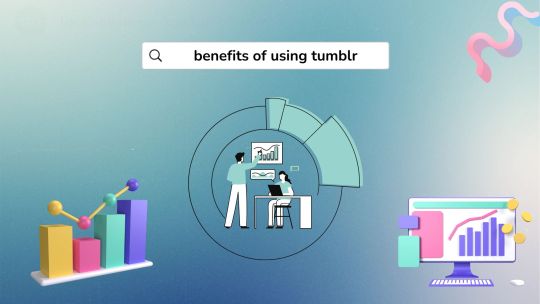Text

How To Build Local Backlinks?
Backlinks are links from other websites to your website. They are one of the most important factors in SEO and they can help you improve your rankings in search results.
Local backlinks are backlinks from websites that are relevant to your local area. These backlinks can help you improve your local SEO and attract more customers from your local area.
Here are some tips on how to build local backlinks:
● Get listed in local directories.
Local directories are websites that list businesses in a specific area. There are many different types of local directories such as Yelp, Google Business Profile and the Chamber of Commerce website.
Getting listed in local directories is a great way to build local backlinks and improve your local SEO.
● Submit guest posts to local blogs and websites.
Guest posting is a great way to get your content published on other websites and build backlinks to your website. When you guest post, be sure to choose blogs and websites that are relevant to your business and your target audience.
● Reach out to local businesses and organizations.
Contact local businesses and organizations and ask them if they would be interested in linking to your website. You could offer to write a guest blog post for them or you could offer to cross-promote each other's businesses.
● Sponsor local events.
Sponsoring local events is a great way to build relationships with potential customers and get backlinks to your website. When you sponsor an event, be sure to include your website address in the event's marketing materials.
● Get involved in the local community.
Getting involved in the local community is a great way to get your name out there and build backlinks to your website. You could volunteer for a local charity, join a local business organization, or attend local events.
Some additional tips for building local backlinks:
● Create high-quality content.
The best way to attract backlinks is to create high-quality content that is informative and engaging. When you create high-quality content, other websites are more likely to link to it.
● Promote your content.
Once you have created high-quality content, be sure to promote it. You can do this by sharing it on social media, submitting it to directories and reaching out to other websites and asking them to link to it.
● Be patient.
It takes time to build backlinks. Don't expect to get a lot of backlinks overnight. Just keep creating high-quality content and promoting it and you will eventually start to see results.
By following these tips, you can build local backlinks and improve your local SEO. This can help you attract more customers from your local area and boost your bottom line.
0 notes
Text

How To Get Positive Customer Reviews?
Positive customer reviews are essential for any business that wants to succeed. They can help you attract new customers, build trust with potential customers and improve your online reputation.
Here are some tips on how to get positive customer reviews:
● Provide excellent customer service.
The best way to get positive customer reviews is to provide excellent customer service. This means being friendly, helpful and responsive to customer needs.
● Exceed customer expectations.
If you can exceed customer expectations, you are more likely to get positive reviews.
For example if a customer is expecting to receive their order in one week but you are able to ship it in two days, they are more likely to be happy with your service and leave a positive review.
● Go the extra mile.
Going the extra mile for your customers is a great way to get positive reviews.
For example if a customer is having trouble with a product, you could offer to help them troubleshoot the issue over the phone or in person.
● Personalize the customer experience.
Personalizing the customer experience is a great way to make customers feel valued and appreciated.
For example you could call a customer by name or remember their preferences.
● Be genuine to your customers.
Customers can tell when you are being genuine so be yourself and be honest with them. If you are genuine, customers are more likely to trust you and leave a positive review.
● Ask for reviews.
Don't be afraid to ask customers for reviews. You can do this in person, via email or through social media.
When you ask for a review, be sure to make it easy for the customer to leave one. You can do this by providing a link to your review page or by sending them a short email with instructions on how to leave a review.
● Respond to all reviews.
Be sure to respond to all reviews both positive and negative. When you respond to a positive review, thank the customer for their feedback.
When you respond to a negative review, apologize for the customer's experience and let them know that you are taking steps to resolve the issue.
● Use reviews to improve your business.
Use customer reviews to identify areas where you can improve your business. For example if you receive a lot of negative reviews about a particular product or service, you may need to make some changes.
You can also use positive reviews to highlight the things that your customers love about your business.
By following these tips you can increase your chances of getting positive customer reviews. Positive customer reviews can help you attract new customers, build trust with potential customers and improve your online reputation.
Are there any tips you know that we haven’t mentioned? Let us know in the comments.
0 notes
Text

How to choose the right local keywords?
Choosing the right local keywords is essential for any business that wants to improve its local SEO.
When you choose the right keywords, you're making it easier for potential customers to find your business when they search for products or services like yours in their area.
Here are some tips on how to choose the right local keywords for your business:
● Start with a brainstorming session.
Make a list of all the words and phrases that you think potential customers might use to search for your business.
This could include your products or services, your location and any other relevant information.
● Use keyword research tools.
There are a number of keyword research tools available that can help you identify relevant keywords and their search volume.
Some popular keyword research tools include Google Keyword Planner, Ahrefs and SEMrush.
● Consider your target audience.
When choosing keywords, it's important to consider your target audience. What words and phrases are they likely to use when searching for a business like yours?
● Be specific.
The more specific your keywords are, the more likely you are to attract qualified traffic to your website.
For example instead of targeting the keyword "plumber," you could target the keyword "emergency plumber in San Jose, CA."
● Think long-tail.
Long-tail keywords are more specific and less competitive than short-tail keywords.
For example, instead of targeting the keyword "plumber," you could target the keyword "emergency plumber in San Jose, CA who can fix a leaky faucet."
Once you have a list of potential keywords, you need to narrow it down to a select few that you'll use for your local SEO campaign.
Here are some factors to consider when narrowing down your keyword list:
● Search volume.
How many people are searching for each keyword? You want to choose keywords that have a decent search volume but not so much that the competition is too high.
● Relevancy.
How relevant are the keywords to your business? You want to choose keywords that are relevant to your products or services and that your target audience is likely to use.
● Competition.
How much competition is there for each keyword? You want to choose keywords that have a good balance of search volume and competition.
Once you've narrowed down your keyword list, you can start using those keywords in your website content, Google Business Profile and other local SEO efforts.
Some additional tips for choosing the right local keywords:
●Use local modifiers.
When choosing keywords, be sure to include local modifiers such as your city, state, ZIP code or target specific neighborhoods or areas in your city.
For example you could target the keywords "restaurant in Cupertino, CA near Google." This will help your business show up in search results for people who are searching for businesses in your area.
●Think about what people are searching for.
When choosing keywords, think about what people are actually searching for. What words and phrases are they using to find businesses like yours?
You can use Google Trends to see what people are searching for in your area.
●Use a mix of keyword types.
When choosing keywords, be sure to use a mix of keyword types including short-tail keywords, long-tail keywords and branded keywords.
Branded keywords are keywords that include your brand name.
Short-tail keywords —also known as head terms—are search queries that typically contains 1-3 words and covers a very broad topics and have high search volumes which means that they attract more website visitors.
Long-tail keywords are phrases that is generally made from 3-5 words. They are highly specific search queries that tend to have relatively low search volumes and competition levels.
●Track your results.
Once you've started using keywords, be sure to track your results. This will help you see which keywords are working well for your business and which ones need to be adjusted.
By choosing the right local keywords and using them in your website content, Google Business Profile and other local SEO efforts, you can improve your chances of being found by potential customers in your area.
Are there any tips you know that we haven’t mentioned? Let us know in the comments.
0 notes
Text

How to optimize your Google Business Profile?
Your Google Business Profile is one of the most important online assets your business has. It's what shows up when people search for your business on Google Maps and Search.
A well-optimized Google Business Profile can help you attract more customers, increase website traffic and boost your bottom line.
Here are some tips on how to optimize your Google Business Profile:
● Claim and verify your profile.
This is the first step to optimizing your profile. To claim your profile, go to the Google Business Profile Manager and search for your business. If your business is already listed, you can claim it by following the on-screen instructions. Once you've claimed your profile, you'll need to verify it.
There are a few different ways to verify your profile including by receiving a postcard in the mail or verifying it via phone.
● Fill out your profile completely.
The more information you provide in your profile, the more likely it is to show up in search results. Be sure to include your business name, address, phone number, website, hours of operation and description. You can also add photos, videos and special offers to your profile.
● Choose the right categories.
Google Business Profile allows you to choose up to 10 categories for your business. Choose categories that are relevant to your business and that potential customers are likely to search for.
● Add special attributes.
Special attributes are features that are specific to certain types of businesses. For example, if you're a restaurant, you can add attributes such as wheelchair accessibility, outdoor seating and kid-friendly. Adding special attributes can help your business stand out from the competition.
● Get reviews.
Reviews are one of the most important factors in local SEO. Encourage your customers to leave reviews on your Google Business Profile. You can respond to reviews to thank customers for their feedback and to address any negative reviews.
● Use Google Posts.
Be sure to post regularly to keep your profile fresh and engaging. Google Posts are a great way to keep your customers updated about your business and to promote your products or services. You can use Posts to announce new products or services, share special offers and promote events.
● Keep your profile up to date.
Make sure to update your profile information whenever your business changes such as if you move to a new location or change your hours of operation. You should also regularly add new photos and videos to your profile.
Some additional tips for optimizing your Google Business Profile for local SEO:
● Use relevant keywords throughout your profile.
When you're filling out your profile, be sure to use relevant keywords throughout. This will help your profile show up in search results when people search for those keywords.
● Optimize your photos.
Your photos are one of the first things potential customers will see so it's important to make a good impression. Use high-quality photos that showcase your business and its products or services.
● Encourage customers to leave reviews.
Encourage your customers to leave reviews on your Google Business Profile by sending them a follow-up email or by asking them in person.
● Respond to reviews promptly.
When you receive a review, be sure to respond to it promptly. This shows potential customers that you're engaged with your business and that you value their feedback.
● Use Google My Business Insights.
Google My Business Insights provides you with valuable data about your profile performance. You can see how many people are viewing your profile, where they're coming from and what actions they're taking. You can use this data to improve your profile and make it more effective.
By following these tips, you can optimize your Google Business Profile and improve your local SEO. This can help you attract more customers to your business, increase website traffic and boost your bottom line.
Are there any tips you know that we haven’t mentioned? Let us know in the comments.
0 notes
Text

The Best 20 Free Keyword Research Tools in 2023
Keyword research is an essential part of SEO and content marketing. Here is a list of free keyword research tools that can help you find relevant keywords for your content:
● Google Keyword Planner:
Google Keyword Planner is one of the most widely used keyword research tools. It provides keyword ideas, search volume data and competition levels. You'll need a Google Ads account to access it.
● Google Trends:
Google Trends allows you to explore the popularity of specific keywords over time. It can help you identify trends and seasonality in keyword usage.
● Keyword Generator:
Keyword Generator shows up to 150 keyword ideas. Just enter a broad topic, choose your target country and hit “Find keywords.”
●Google Search Console:
Google Search Console (GSC) shows how your website performs for its top 1,000 keywords in organic search. Just go to the Search results report.
● Ubersuggest:
Ubersuggest is a free keyword research tool by Neil Patel that provides keyword suggestions, search volume and keyword difficulty data.
● Keyword Surfer:
Keyword Surfer is a Chrome extension that provides keyword search volume, related keywords and backlink data directly in your Google search results.
● Answer The Public:
Answer The Public tool helps you find questions and topics related to your keyword. It can be useful for content ideas and long-tail keywords.
● Keyword Sheeter:
Keyword Sheeter generates a list of keywords from your seed keyword by scraping Google's autocomplete suggestions. It's a quick way to get keyword ideas.
● Wordtracker Scout:
Wordtracker Scout is another Chrome extension that provides keyword data while you browse the web. It offers keyword suggestions and competitive analysis.
● Keyword.io:
Keyword.io tool helps you find keyword ideas from various sources including Google, Bing, YouTube and more.
● Bulk Keyword Generator:
Bulk Keyword Generator is a simple tool that generates keyword ideas in bulk based on a single seed keyword. It's a free local SEO keyword tool for small businesses and marketers. Select a business type and city and it will automatically generate local keywords for your industry that potential customers might use to find you.
● Soovle:
Soovle provides keyword suggestions from multiple search engines and platforms on a single page. It can help you discover keyword variations.
● LSI Graph:
LSI (Latent Semantic Indexing) keywords are related terms that can improve your content's relevancy. LSI Graph helps you find these keywords. It allows performing 10 searches per day for free. Just go to the website, paste your seed keyword and you will get a list of LSI keywords accompanied by SEO stats that help you pick the most promising keyword phrases. The results will bring a bunch of ideas to enrich your content with more topics or features.
● Serpstat Free Keyword Research:
Serpstat offers a limited free plan that provides keyword suggestions, search volume and competition data.
● KeywordTool.io:
The free version of KeywordTool.io offers keyword suggestions from Google, Bing, YouTube, Amazon and other platforms.
● Keyword Explorer by Moz:
Moz offers a free keyword research tool that provides keyword suggestions, difficulty scores and search volume data.
● Seed Keywords:
Seed Keywords allows you to create custom scenarios and ask people how they would search for a particular topic or product. It can be helpful for brainstorming.
● WordStream Free Keyword Tool:
WordStream offers a free keyword tool that provides keyword suggestions and estimated search volume.
● Keysearch:
Keysearch is another free tool to discover LSI keywords for your content. The keyword-finding algorithm behind the tool goes through the first page of Google search results for your main keyword and analyzes all on the ranking pages to find words and phrases most frequently used in them.
● AlsoAsked:
AlsoAsked is a free keyword research tool for exploring the questions your visitors are asking.
Remember that while these tools are free to use, many of them offer premium versions with more features and data. Depending on your needs, you may find value in upgrading to a paid plan for more comprehensive keyword research.
0 notes
Text

9 Benefits of using Tumblr
You've probably heard of Tumblr before, but have you ever considered using this blogging tool? Is it really worth it?
The site allows you to create blog posts, organize them into categories and share them with other users. The service is free but premium features (like custom themes) come at a cost.
"It may not seem like much, but Tumblr has a ton of benefits."
Here are 9 reasons why you should use Tumblr instead of Facebook and Twitter:
1. You can use Tumblr if you have no website.
If you’re just getting started with a business or idea, you could use Tumblr as your website until you’re ready to invest in one.
2. You will be able to customize your blog without having to learn code.
If you want to build a blog and don’t know how to code, Tumblr may be the best platform for you.
Creating a blog on Tumblr is quick and easy, so it’s perfect for beginners who don’t know much about coding or design.
3. You can create multiple blogs for free.
Once you sign up for a free account on Tumblr, you can create as many blogs as you want. This provides an advantage over WordPress, where there are costs associated with hosting multiple websites on their platform (or where there may be limits on how many websites you can create within one account).
4. You can post almost anything – text, photos, audio files and videos – directly from your phone or tablet with ease and without any programming skills required!
With its simple interface, posting content to Tumblr is easier than most other blogging platforms. As long as people have access to the internet, they can view content that has been posted on Tumblr. This means that anyone will be able to find content that has been created by someone else and post it back onto their own Tumblr page easily!
5. A wide variety of themes are available for free.
While WordPress requires some knowledge of coding before changing themes or adding customizations, Tumblr offers users a wide range of themes that they can choose from (and even change) without having any technical skills whatsoever!
And if there’s nothing quite right for what users need/want…they can always buy/create their own theme (or hire someone else to do it).
Other platforms such as Blogger/Blogspot also offer users pre-made templates/themes but none come close to offering the same number or variety of choices like Tumblr does!
6. Tumblr provides tools / features that make reblogging very easy!
Reblogging is essentially copying content from another user’s page and posting it onto your own page (with the original source still being credited).
The reblog feature is one of the things that makes Tumblr such a powerful tool for sharing information and ideas. When other Tumblr users, marketers, or bloggers reblog your content, this communicates to search engines that your content is valuable. It will then improve your ranking in Tumblr and Google search results.
7. Tumblr offers "dofollow" links.
This means that when you share content from another Tumblr blog on your own blog, the original author gets a "backlink" to their blog. Backlinks are important because they help improve the search engine ranking of the original author's blog.
8. Using Tumblr is that it's easy to go viral.
If you create a funny meme or post an interesting video on your Tumblr blog, it can quickly be shared by thousands of other users and become very popular. This can be a great way to get more exposure for your brand or website.
However the default URLs for your Tumblr posts will be long strings of numbers, which isn’t ideal for SEO. By clicking the gear-shaped icon in the top right of the post creator, you can create a custom URL ("permalink") for each individual post on your Tumblr account. Format these much like you would on your regular site as a best practice.
Plus providing easy-to-read permalinks is a simple way to improve your credibility and boost organic traffic because they show potential visitors that your page is safe and valuable. Plus, descriptive permalinks make it easier for search engines to categorize the pages on your blog because they will understand your content’s focus topic better.
9. Tumblr is also a great platform for social media marketing.
You can use hashtags to reach a wider audience, and you can also post links to your website or blog on your Tumblr posts. This can help increase traffic to your site and improve your search engine ranking.
Overall, Tumblr is a great blogging platform with many benefits. It's easy to use, it offers dofollow links, and it's a great way to reach a wider audience through social media marketing. So if you're looking for a new platform to start blogging on, be sure to check out Tumblr!

0 notes
Text

Tumblr SEO: Top 7 SEO Tips and Best Practices for Tumblr Blogs
What does it take to build a successful blog or tumblr site? How do you get traffic? What makes your content stand out from the rest? The answers to these questions can vary depending on who you ask.
There are a ton of blogs out there, some big, some small. Some are focused on one topic, some are broad. Some are informative, some entertaining. And they all want visitors.
If you’re looking to start a successful blog, you should focus on creating high-quality content. If you don’t provide value to your audience, they won’t return.
That said, if you want to increase your chances of being discovered, you should also pay attention to other important aspects of building a successful blog. From choosing good keywords to optimizing your images, here are seven essential steps to take before launching your tumblr blog:
Create a Custom Domain Name
Tumblr blogs do not have their own domain name, so they will always show up as subdomains of tumblr.com. You should consider setting up a custom domain name for your blog. A custom domain name helps to improve search engine rankings especially for mobile searches.
2. Use Keywords in Your Title Tag
When writing your title tag, make sure to use keywords related to your content. If you want to rank high for certain terms, try to incorporate those terms into your post titles.
3. Write Longer Posts
The length of your posts affects how often they appear on Tumblr's front page. Make sure to write long-form quality content that includes images and videos.
4. Include Links to Other Websites
If people click on links to other websites then Tumblr may give them credit for your content. Try to add links to your website or social media profiles if possible.
5. Use Tags
Tags help categorize your content and allow Tumblr users to find specific content based on topics. Try to label each post with relevant tags to increase the likelihood that your readers will find what they're looking for.
6. Link Back to Your Website
Link back to your site whenever possible. People who visit your blog may wish to read more about your business on your website.
7. Follow Others
Follow others who share similar interests. This will build trust between you and your followers.
Conclusion:
Getting more viewers to your Tumblr blog can be challenging. This is why a Tumblr SEO strategy is integral in gaining organic traffic to your Tumblr blog or Tumblr site.
Compared with other blogging platforms, Tumblr provides fewer tools to optimize content for search engines. If you are new to SEO, optimizing something on Tumblr that does not support SEO would be more challenging.
But the most important thing is to use keywords in your Tumblr posts. You can do this by adding tags to your content and using the appropriate search engine keywords in your Tumblr URL.

0 notes
Text
How To Use Tumblr For Business Effectively?

Tumblr has become a go-to site for people looking for inspiration. What was once known only as a blogging platform now offers free themes, analytics tools and even a mobile app. How does Tumblr work?
Founded in 2007, the company has since grown into one of the most popular social media platforms in the world. In 2018 alone, the platform saw over 400 million visitors.
With its strong focus on visual appeal, Tumblr has become a powerful tool for brands and businesses. By understanding its unique features and capabilities, marketers can create effective campaigns and engage their audience.
With more than 550 million monthly active users, Tumblr is a social media platform that should not be ignored by businesses. The site is especially popular among millennials, with 60% of its user base falling in the 18-34 age demographic.
While Tumblr may not be as popular as other social networking sites like Facebook, Twitter and Instagram, it offers unique features and capabilities that can be leveraged to reach and engage target audiences.
Here are some tips for using Tumblr to market your business effectively:
1. Create Engaging Original Content
Tumblr is all about content. Users come to the site to consume and share content that interests them. As a result, businesses need to create content that is engaging and relevant to their target audience.
Content on Tumblr can take many different forms including text posts, images, infographics, GIFs, videos and more. Experiment with different types of content to see what works best for your brand and your audience.
Make sure you’re not just posting reblogs or reposted content. Tumblr is now full of content that was originally created by others. Posting original content is the best way to get noticed and build a following.
When creating content for Tumblr, keep the following tips in mind:
Tumblr is a visually-oriented platform, so make sure your content is engaging and visually appealing.
Keep your content short and sweet – Tumblr users are known for their short attention spans! Make sure your blog posts are clear and concise. People don't want to read a novel every time they visit your website so keep it short and sweet.
Write a catchy headline – You have a very short amount of text to grab someone's attention so make it count! Write a catchy headline that accurately describes what your blog post is about.
Create custom URLs and use hashtags to help your content get discovered by other Tumblr users.
Internally link your posts – One way to help keep things organized and ensure that your readers can find everything they're looking for is to internally link your posts. This means creating links from one of your posts to another related post on your blog. Not only does this help people navigate your site more easily but it also boosts your SEO by helping search engines index your content more effectively.
Take advantage of Tumblr’s reblogging feature to help your content reach a wider audience.
2. Use The Right Type Of Images And Get Creative
Tumblr is a great platform for sharing visuals and videos. You should always keep in mind what type of content you have before posting anything online. If you’re looking to create a brand identity then you need to make sure you post relevant and compelling images.
Don't limit yourself to only using stock photography. Try incorporating your own unique style. Show off your skills and creativity.
3. Be Consistent On Posting
Once you’ve built your audience, you need to make sure they know when to expect updates from you. Post consistently if you want to maintain a community of followers.
Conclusion:
There is no one-size-fits-all answer to the question of how to use Tumblr for business effectively today. However, there are some key things to keep in mind.
First, remember that Tumblr is a visual platform. This means that your content should be highly visual and keyword-rich in order to stand out. Second, focus on creating original content that will appeal to your target audience.
And finally, make sure to promote your Tumblr blog on other social media platforms and through other channels such as your website or email list. By following these seo tips, you can ensure that your Tumblr blog will be a success.

0 notes
Text
How to use Tumblr for Local SEO?

If you are a business owner you want to make sure that your website is seen by as many people as possible. You want to be on the first page of search engines so potential customers can easily find you. One way to improve your website ranking is to create a Tumblr blog and link it to your website.
Tumblr is a social networking and microblogging website that allows users to post text, images, videos, and audio content. It also allows users to follow other users' blogs, and reblog (or repost) content from other blogs. Tumblr is a great platform for SEO because it has high engagement rates and a large user base. Here are some tips for using Tumblr for local SEO:
Use keyword-rich tags. When you tag your posts with relevant keywords, your content is more likely to show up in search results. Be sure to use relevant keywords in your tags so that users can find your content more easily.
Optimize your blog title and description. Include keywords in your blog title and description to help your blog rank higher in search results.
Create original content. Original content is more likely to be shared and reblogged, which can help increase your reach and engagement rates.
Interact with other users. Like and reblog other users' content to build relationships and increase the visibility of your own content.
Promote your content elsewhere. Share your Tumblr posts on other social media platforms and make sure to add a link to your websites to drive traffic and sales for your business. The links you add to all posts on your Tumblr blog are do-follow links, allowing you to increase traffic to your website through shared links.
Does Tumblr help with SEO?
There is no direct evidence that Tumblr helps with SEO, but there are some indirect benefits that could be helpful. For example, if you use Tumblr to post original content, you could get inbound links from other websites that share your content. This could help improve your website's ranking in search engine results pages. Additionally, if you use Tumblr to promote your website or blog, you could potentially increase traffic to your site, which could also lead to improved SEO.
Is Tumblr good for backlinks?
Yes, Tumblr is good for backlinks because it allows you to share your content with a large audience quickly and easily. When you post something on Tumblr, it gets shared with all of your followers, and then their followers, and so on. This can result in a lot of traffic to your website or blog, which can help improve your search engine ranking.
Tumblr backlinks are very important if you want to get more traffic from Tumblr.
This is because when you have a lot of backlinks, your website will rank higher on search engines. This means that when people search for keywords related to your website, your website will come up first.
The more backlinks you have, the higher your website will rank. Therefore, it is very important to get as many backlinks as possible.
One way to get more backlinks is to post content on Tumblr that is related to your website. For example, if you own a website about dogs, you can post pictures of dogs on Tumblr.
Another way to get more backlinks is to comment on other people's posts. When you comment on someone's post, your website's URL will be left as a trackback. This means that when someone clicks on your URL, they will be taken to your website.
The last way to get more backlinks is to use social bookmarking sites. Social bookmarking sites are websites where you can submit links to your website. When you submit a link to a social bookmarking site, other people who use the site can click on the link and visit your website.
How do you do backlinks on Tumblr?
To create backlinks on Tumblr, you can share other users' posts on your own blog or share your own posts on other users' blogs. When you share someone else's post, be sure to include a link back to the original post. When you share your own posts, others can reblog them and include a link back to your blog.
Is Tumblr good for promoting business?
Yes, Tumblr is a great platform for promoting businesses. It has a large and active user base, and businesses can use Tumblr to reach out to potential customers and build relationships with them. Tumblr also allows businesses to create their own blogs and post content that is relevant to their products or services.
Even if you already have a business website, a blog such as Tumblr helps you to connect with fans and customers that make use of the service. You can post everything that you might want to share with your followers, such as updates about new products or services, interesting news and links to content that is related to your business.
Tumbler has a number of ways in which users can interact with your website, including following you so they never miss an update, liking a particular post and reblogging (posting) content from your Tumblr blog onto their own. This allows your brand and content to be spread quickly across the internet.
What are the benefits of using Tumblr for local SEO?
There are many benefits of using Tumblr for local SEO. For one, it can help you to get your website and content indexed more quickly by search engines. Additionally, Tumblr allows you to tag your content with relevant keywords, which can help improve your website's search engine ranking. Finally, Tumblr provides a platform for you to interact with other local businesses and potential customers, which can help to increase your visibility and reputation in the local community.
Is WordPress or Tumblr better?
When it comes to choosing a platform for blogging, WordPress and Tumblr are two of the most popular options. So which is better?
WordPress is a more versatile platform than Tumblr. It offers a wider range of features and customization options, making it a good choice for more serious bloggers who want more control over their blog's appearance and functionality.
Tumblr is simpler and more user-friendly than WordPress. It's a good choice for casual bloggers who want an easy way to post content without having to worry about things like themes and plugins.
So if you don't know how to code, but you want a simple way to post content on your website, Tumblr is a great choice for beginners. If you're interested in more customization and advanced features, however, WordPress is a better option.
Conclusion:
Tumblr is a great platform for businesses and individuals to market their content and build backlinks. Although it is not as popular as other social media platforms, it still has a lot to offer in terms of SEO. By following a few simple tips, you can optimize your Tumblr blog for the search engines and get more traffic.

7 notes
·
View notes